2-CHLORO-4-NITROBENZONITRILE
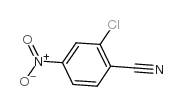
2-CHLORO-4-NITROBENZONITRILE structure
|
Common Name | 2-CHLORO-4-NITROBENZONITRILE | ||
|---|---|---|---|---|
| CAS Number | 28163-00-0 | Molecular Weight | 182.56400 | |
| Density | 1.47 g/cm3 | Boiling Point | 337ºC at 760 mmHg | |
| Molecular Formula | C7H3ClN2O2 | Melting Point | 83-84 °C | |
| MSDS | N/A | Flash Point | 157.6ºC | |
| Name | 2-Chloro-4-nitrobenzonitrile |
|---|---|
| Synonym | More Synonyms |
| Density | 1.47 g/cm3 |
|---|---|
| Boiling Point | 337ºC at 760 mmHg |
| Melting Point | 83-84 °C |
| Molecular Formula | C7H3ClN2O2 |
| Molecular Weight | 182.56400 |
| Flash Point | 157.6ºC |
| Exact Mass | 181.98800 |
| PSA | 69.61000 |
| LogP | 2.64308 |
| Vapour Pressure | 0.000108mmHg at 25°C |
| Index of Refraction | 1.599 |
Synonym:None Known Section 2 - COMPOSITION, INFORMATION ON INGREDIENTS
Risk Phrases: 36/37/38 Section 3 - HAZARDS IDENTIFICATION EMERGENCY OVERVIEW
Irritating to eyes, respiratory system and skin. Potential Health Effects Eye: Causes eye irritation. May cause chemical conjunctivitis. Skin: Causes skin irritation. Ingestion: May cause gastrointestinal irritation with nausea, vomiting and diarrhea. Metabolism may release cyanide, which may result in headache, dizziness, weakness, collapse, unconsciousness and possible death. Inhalation: Causes respiratory tract irritation. Can produce delayed pulmonary edema. May be metabolized to cyanide which in turns act by inhibiting cytochrome oxidase impairing cellular respiration. Chronic: May be metabolized to cyanide which in turn acts by inhibiting cytochrome oxidase impairing cellular respiration. Effects may be delayed. Section 4 - FIRST AID MEASURES Eyes: Immediately flush eyes with plenty of water for at least 15 minutes, occasionally lifting the upper and lower eyelids. Get medical aid. Skin: Get medical aid. Flush skin with plenty of water for at least 15 minutes while removing contaminated clothing and shoes. Wash clothing before reuse. Ingestion: Never give anything by mouth to an unconscious person. Get medical aid. Do NOT induce vomiting. If conscious and alert, rinse mouth and drink 2-4 cupfuls of milk or water. Wash mouth out with water. Inhalation: Remove from exposure and move to fresh air immediately. If not breathing, give artificial respiration. If breathing is difficult, give oxygen. Get medical aid. Do NOT use mouth-to-mouth resuscitation. Notes to Physician: Treat symptomatically and supportively. Section 5 - FIRE FIGHTING MEASURES General Information: As in any fire, wear a self-contained breathing apparatus in pressure-demand, MSHA/NIOSH (approved or equivalent), and full protective gear. During a fire, irritating and highly toxic gases may be generated by thermal decomposition or combustion. Extinguishing Media: Use water spray, dry chemical, carbon dioxide, or chemical foam. Section 6 - ACCIDENTAL RELEASE MEASURES General Information: Use proper personal protective equipment as indicated in Section 8. Spills/Leaks: Vacuum or sweep up material and place into a suitable disposal container. Clean up spills immediately, observing precautions in the Protective Equipment section. Avoid generating dusty conditions. Provide ventilation. Section 7 - HANDLING and STORAGE Handling: Minimize dust generation and accumulation. Avoid breathing dust, vapor, mist, or gas. Avoid contact with eyes, skin, and clothing. Keep container tightly closed. Avoid ingestion and inhalation. Use only in a chemical fume hood. Wash clothing before reuse. Storage: Store in a tightly closed container. Store in a cool, dry, well-ventilated area away from incompatible substances. Section 8 - EXPOSURE CONTROLS, PERSONAL PROTECTION Engineering Controls: Facilities storing or utilizing this material should be equipped with an eyewash facility and a safety shower. Use adequate ventilation to keep airborne concentrations low. Exposure Limits CAS# 28163-00-0: Personal Protective Equipment Eyes: Wear appropriate protective eyeglasses or chemical safety goggles as described by OSHA's eye and face protection regulations in 29 CFR 1910.133 or European Standard EN166. Skin: Wear appropriate protective gloves to prevent skin exposure. Clothing: Wear appropriate protective clothing to prevent skin exposure. Respirators: Follow the OSHA respirator regulations found in 29 CFR 1910.134 or European Standard EN 149. Use a NIOSH/MSHA or European Standard EN 149 approved respirator if exposure limits are exceeded or if irritation or other symptoms are experienced. Section 9 - PHYSICAL AND CHEMICAL PROPERTIES Physical State: Solid Color: Not available. Odor: Not available. pH: Not available. Vapor Pressure: Not available. Viscosity: Not available. Boiling Point: Not available. Freezing/Melting Point: 78 - 80 deg C Autoignition Temperature: Not available. Flash Point: Not available. Explosion Limits, lower: Not available. Explosion Limits, upper: Not available. Decomposition Temperature: Solubility in water: Specific Gravity/Density: Molecular Formula: C7H3ClN2O2 Molecular Weight: 182.4862 Section 10 - STABILITY AND REACTIVITY Chemical Stability: Stable at room temperature in closed containers under normal storage and handling conditions. Conditions to Avoid: Incompatible materials, dust generation, excess heat. Incompatibilities with Other Materials: Oxidizing agents, strong bases, strong acids. Hazardous Decomposition Products: Hydrogen chloride, nitrogen oxides, carbon monoxide, carbon dioxide. Hazardous Polymerization: Has not been reported Section 11 - TOXICOLOGICAL INFORMATION RTECS#: CAS# 28163-00-0 unlisted. LD50/LC50: Not available. Carcinogenicity: 2-Chloro-4-Nitrobenzonitrile - Not listed by ACGIH, IARC, or NTP. Section 12 - ECOLOGICAL INFORMATION Section 13 - DISPOSAL CONSIDERATIONS Dispose of in a manner consistent with federal, state, and local regulations. Section 14 - TRANSPORT INFORMATION IATA Not regulated as a hazardous material. IMO Not regulated as a hazardous material. RID/ADR Not regulated as a hazardous material. Section 15 - REGULATORY INFORMATION European/International Regulations European Labeling in Accordance with EC Directives Hazard Symbols: XI Risk Phrases: R 36/37/38 Irritating to eyes, respiratory system and skin. Safety Phrases: S 26 In case of contact with eyes, rinse immediately with plenty of water and seek medical advice. S 37/39 Wear suitable gloves and eye/face protection. WGK (Water Danger/Protection) CAS# 28163-00-0: No information available. Canada None of the chemicals in this product are listed on the DSL/NDSL list. CAS# 28163-00-0 is not listed on Canada's Ingredient Disclosure List. US FEDERAL TSCA CAS# 28163-00-0 is not listed on the TSCA inventory. It is for research and development use only. SECTION 16 - ADDITIONAL INFORMATION N/A |
| Hazard Codes | Xn:Harmful; |
|---|---|
| Risk Phrases | R20/21/22;R36/37/38 |
| Safety Phrases | S36/37/39-S26-S22 |
| RIDADR | 3276 |
| Packaging Group | III |
| Hazard Class | 6.1 |
| HS Code | 2926909090 |
|
~88% 
2-CHLORO-4-NITR... CAS#:28163-00-0 |
| Literature: Yokoyama, Masataka; Yoshida, Sayaka; Imamoto, Tsuneo Synthesis, 1982 , # 7 p. 591 - 592 |
|
~80% 
2-CHLORO-4-NITR... CAS#:28163-00-0 |
| Literature: Du, Bingnan; Jiang, Xiaoqing; Sun, Peipei Journal of Organic Chemistry, 2013 , vol. 78, # 6 p. 2786 - 2791 |
|
~86% 
2-CHLORO-4-NITR... CAS#:28163-00-0 |
| Literature: Kokel, Bruno; Menichi, Gabriel; Hubert-Habart, Michel Synthesis, 1985 , # 2 p. 201 - 202 |
|
~% 
2-CHLORO-4-NITR... CAS#:28163-00-0 |
| Literature: Holmes; Loudon Journal of the Chemical Society, 1940 , p. 1521,1524 |
|
~% 
2-CHLORO-4-NITR... CAS#:28163-00-0 |
| Literature: Kirsanow; Makitra Zhurnal Obshchei Khimii, 1956 , vol. 26, p. 905; engl. Ausg. S. 1029 |
|
~% 
2-CHLORO-4-NITR... CAS#:28163-00-0 |
| Literature: Kirsanow; Makitra Zhurnal Obshchei Khimii, 1956 , vol. 26, p. 905; engl. Ausg. S. 1029 |
|
~% 
2-CHLORO-4-NITR... CAS#:28163-00-0 |
| Literature: Holmes; Loudon Journal of the Chemical Society, 1940 , p. 1521,1524 |
|
~% 
2-CHLORO-4-NITR... CAS#:28163-00-0 |
| Literature: Holmes; Loudon Journal of the Chemical Society, 1940 , p. 1521,1524 |
|
~% 
2-CHLORO-4-NITR... CAS#:28163-00-0 |
| Literature: Kirsanow; Makitra Zhurnal Obshchei Khimii, 1956 , vol. 26, p. 905; engl. Ausg. S. 1029 |
| Precursor 8 | |
|---|---|
| DownStream 5 | |
| HS Code | 2926909090 |
|---|---|
| Summary | HS:2926909090 other nitrile-function compounds VAT:17.0% Tax rebate rate:9.0% Supervision conditions:none MFN tariff:6.5% General tariff:30.0% |
| 2-Chlor-4-nitrobenzonitril |
| 4-nitro-2-chlorobenzonitrile |
| 2-Chloro-4-nitrobenzotrifluoride |
| 2-chloro-4-nitrobenzenecarbonitrile |
| chloronitrobenzenecarbonitrile |
| 2-Chloro-4-Nitrobenzonitrile |
| MFCD00052203 |
| 2-chloro-4-nitro-benzonitrile |

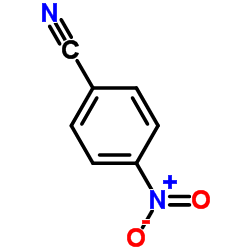
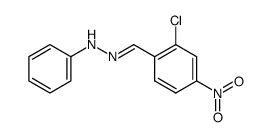
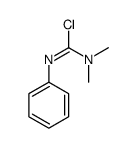
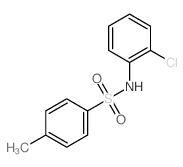
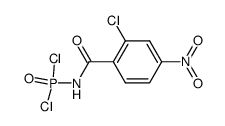
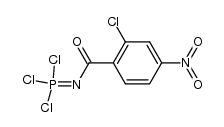
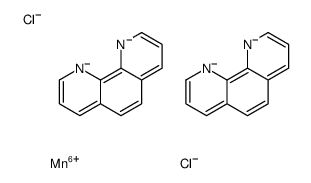



 CAS#:60702-69-4
CAS#:60702-69-4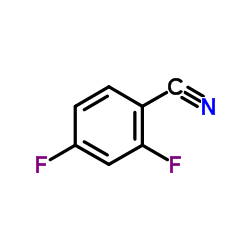 CAS#:3939-09-1
CAS#:3939-09-1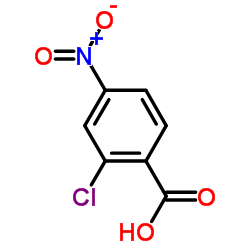 CAS#:99-60-5
CAS#:99-60-5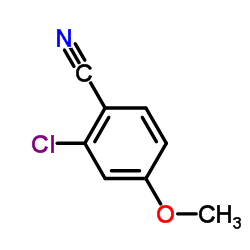 CAS#:127666-99-3
CAS#:127666-99-3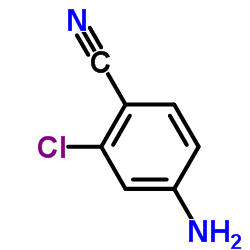 CAS#:20925-27-3
CAS#:20925-27-3
